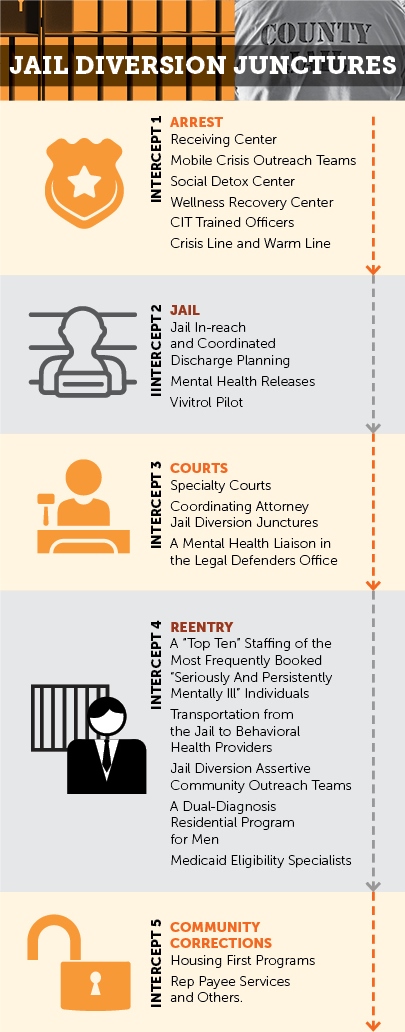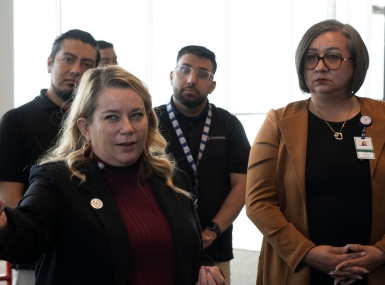Share
Line: | @SLCoWeb will implement a risk-and-needs screening process in its jail this month @NACoTweets |
Ten years ago, in an effort to address a growing jail population, Salt Lake County implemented Project RIO (Right Person In/Out) using a federal Bureau of Justice Assistance grant.
The county’s criminal justice and mental health systems agreed that ideally, persons with mental illness would have the same rate of contact with the criminal justice system as any other person. Systemic improvements were implemented at five intercept points, with the goal of diverting non-violent offenders with behavioral health conditions from incarceration.
Through Project RIO and an already active Crisis Intervention Team program, Social Detox Center and Mental Health Court, policies, programs and practices now exist at each intercept point to help reduce the number of people with mental illnesses and substance use disorders in jails.
One challenge Salt Lake County faced when trying to implement these practices was funding. Recognizing the savings that alternatives to incarceration programs offer and the positive impact to individuals and families, the mayor and County Council chose to match the state general fund dollars they receive for behavioral health services at a rate of 80 percent, rather than the required 20 percent. These investments have yielded great returns through the years:
- a 90 percent emergency department diversion rate through the Receiving Center and Mobile Crisis Outreach Teams
- 972 admissions into the social detox center in FY13 that otherwise would have been jail bookings, and
- a jail diversion outreach team and dual diagnosis residential program that saw a 48 percent reduction in new charge bookings and a 70 percent reduction in length of stay for those in Salt Lake County housing.
Despite these successes, Salt Lake County continues to seek ways to implement new policies and practices to better serve this population.
In 2015, the state passed a comprehensive Justice Reinvestment Initiative that allowed the county to build upon its model. The new legislation allocated funding to counties to provide additional community treatment and to implement risk and need screens for all individuals booked into the jail on Class B misdemeanor offenses or higher.
Salt Lake County plans to implement a risk-and-needs screening process in its jail this month. The process helps predict a person’s likelihood of reoffending and identifies individuals who may benefit from further assessments for mental health or substance use disorders.
It also assists with classification and placement of individuals in the jail and in the community. Research has shown that people identified as low-risk to reoffend pose little risk to public safety and generally benefit from minimal intervention. Research also confirms that mixing low-risk offenders with high-risk offenders can increase recidivism among low-risk offenders.
To address these evolving issues, Salt Lake County began implementation of three new pilot programs. These programs include:
- a prosecutorial pre-diversion pilot focusing on individuals designated as low-risk who also have a substance use disorder and who are charged with a nonviolent Class A misdemeanor. For those who successfully complete this program and associated treatment requirements, the District Attorney’s office will file no charges.
- CORE II, a residential treatment facility for women with both serious mental illness and possible substance use disorders, which includes access to housing resources upon graduation.
- an Intensive Supervision Program that marries treatment dollars with a close collaboration between county probation case management staff and sheriff’s office probation officers overseeing high risk offender caseloads.
Collaboration between the sheriff ’s, district attorney’s and legal defender’s offices, and the county’s behavioral health and criminal justice services, is the key element marking each of the new pilot programs. Efforts are now focused on data collection and outcome measures to evaluate the effectiveness and future of these new programs as the latest additions to the county’s Sequential Intercept Model.




